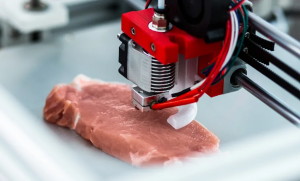A company that goes by the name Made in Space, which consists of a team of 80 plus people are working on accelerating technology that is being used in space such as satellites and other forms of technology for space exploration.

Why Build in Space?
The idea of building in space as opposed to on the ground has been made a reality and that’s all thanks to the wonderful tech we have that is 3d printing. 3D printing comes with a variety of advantages and scientists are leveraging this as much as they can.
There are two massive advantages of building in space using 3D printers: you can save volume by sending dense feedstock for 3D printers rather than capacious constructed objects. The other major advantage is that if you don’t have to build to survive the traumatic forces of launch, you can use more fragile designs and hence less mass which means less waste.
Turning a Dream into Reality

Made in Space’s 3D printers have already done a few rounds of duty on the International Space Station, “Five years ago, manufacturing in space was a dream,” says Andrew Rush who is the co-founder and CEO of Made in Space. “Now there are months we’re manufacturing so much stuff in orbit it seems almost pedestrian.”
“We have manufacturing, we have printing, now let’s get assembly, let’s get robotic operations,” Jim Bridenstine, also of Made In Space, explains. The launch of the new 3d printed satellite which is targeted for 2022, is called Archinaut One.
While most of the satellite will be designed and constructed in space, not all of it can be done off the Earth. But Archinaut One, for which NASA has awarded Made in Space $73.7 million USD, will manufacture two ten-meter-long wings of solar arrays instead of unfolding the customary smaller panels, creating “as much as five times more power than traditional solar panels on spacecraft of similar size.”
The Sky is The Limit
The list of potential add ons are large and vast to say the least, and internet capabilities is an important cosmetic for a space satellite
It is obvious that internet-via-satellite solutions require strong and powerful bandwidth.
Bridenstine, who is very enthusiastic in regards to how this work was done by a small business rather than by big dogs like NASA, actually prefers NASA as a customer of the private space sector, rather than owning and building new technologies itself. Archinaut One in a way is something more of a prototype for eventual robotic construction of the Lunar Gateway.
Regardless of what people might think about this news, Made in Space’s technology is truly exciting.
Made in Space intend to recycle waste polymer on the Internation Space Station. They also plan to manufacture optical fibre in space which would “greatly outperform” standard fibres. They do sheet-metal extrusion and are interested in 3D printing metals as well as polymers in space.
Saving Costs while Still Being Efficient

The most interesting part of this whole thing is their approach to converting lunar and other rocks which can be found on Earth or even The Moon and turning them into 3D-printing feedstock and using those materials to construct extremely strong, resistant and airtight structures.
As it turns out, 70% moondust can be mixed with 30% polymer nodules into a mixture that can be heated into 3D feedstock for an amazing fraction of the cost of sintering. Made in Space’s amazing and ambitious plan to construct spacecraft technology from asteroids is called “Project RAMA.”
In Conclusion
Over the span of a lot of time and numerous work and studies, Made in Space has earned the right to be taken seriously and they have been. The company’s four co-founders met in Singularity University where they talked NASA into giving them an unused basement room as their initial office, which has taken them to where they are now.
This goes on to show how much 3d printing is going to become more of a mainstream and everyday thing the more it progresses and gets better over time.
Do you have any thoughts or comments related to this jump in technology? We would love to know your thoughts and opinions in the comments down below!


